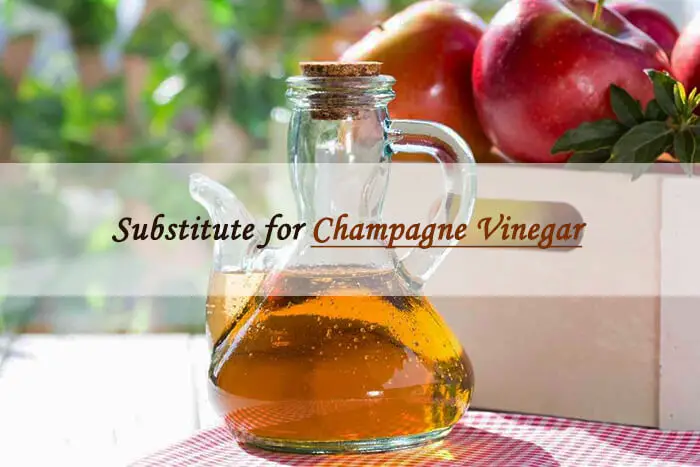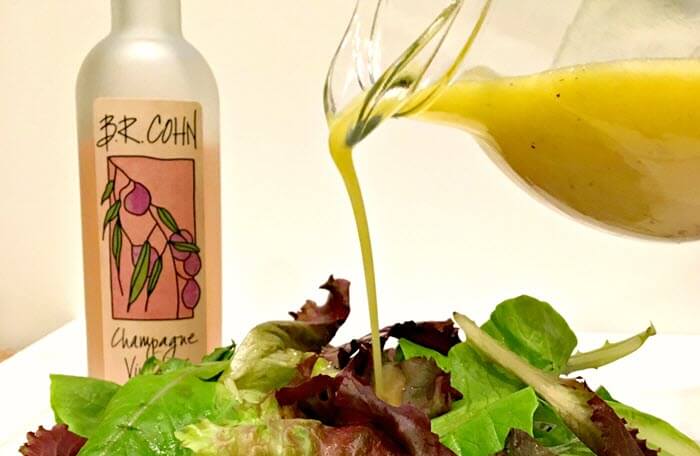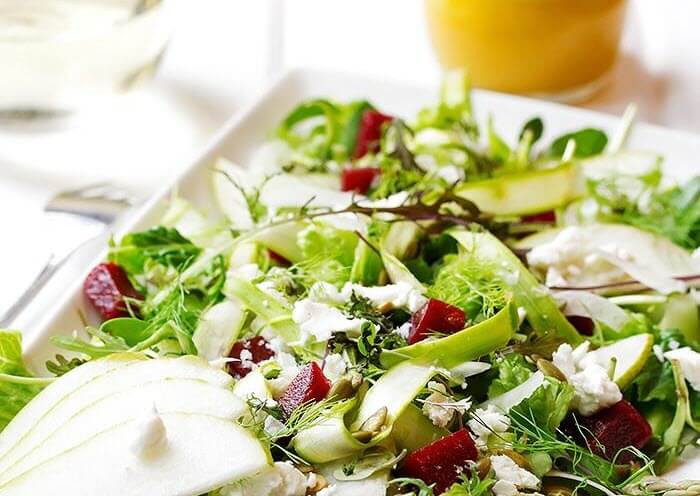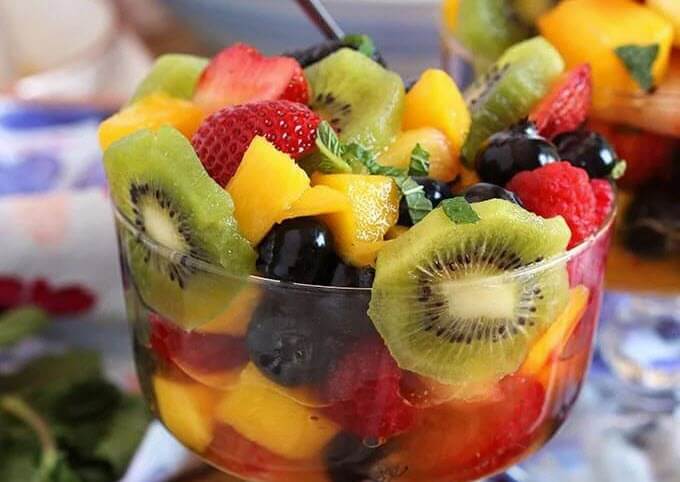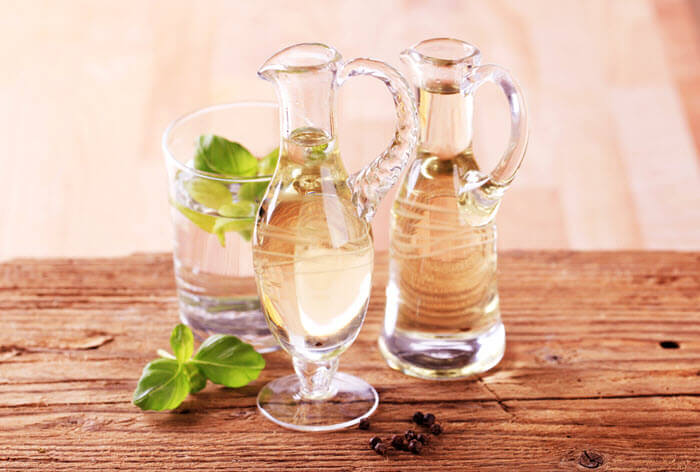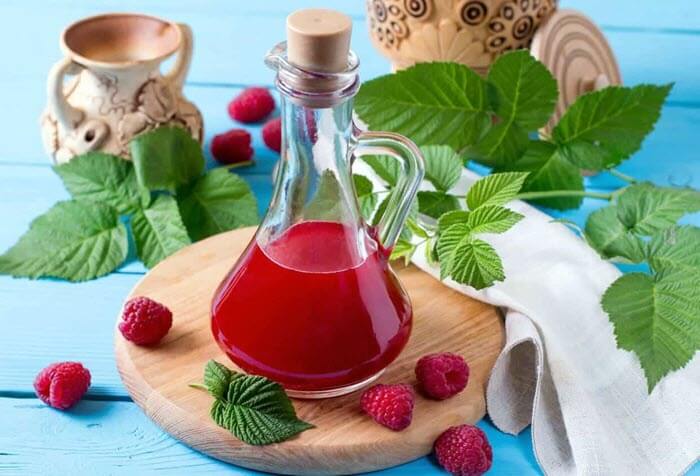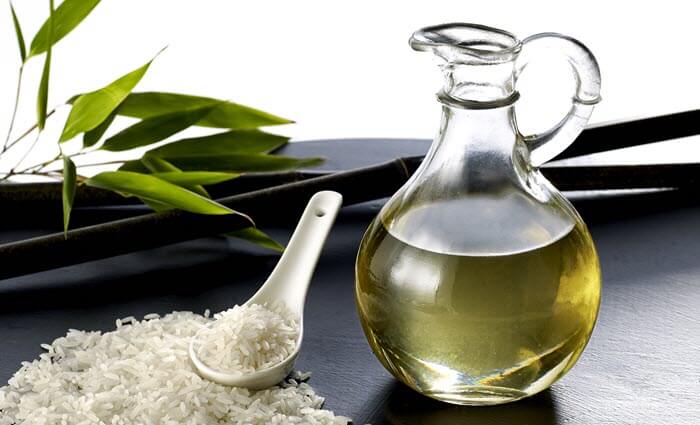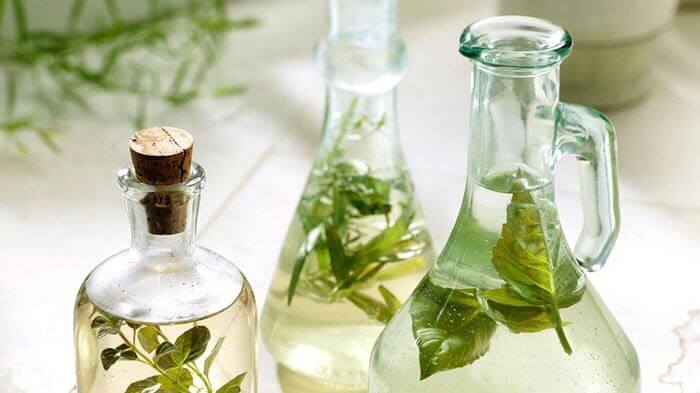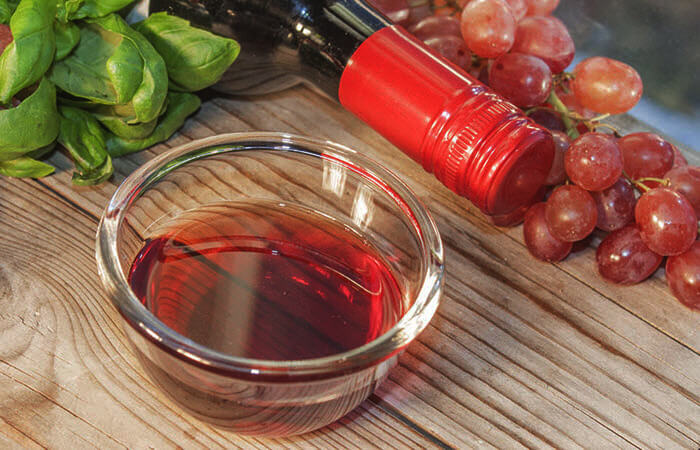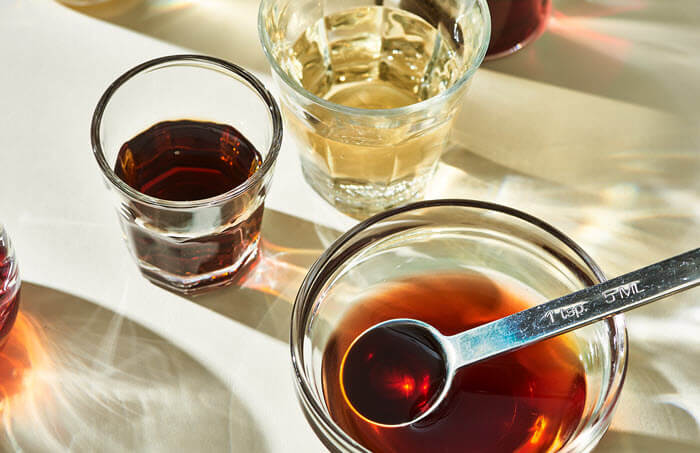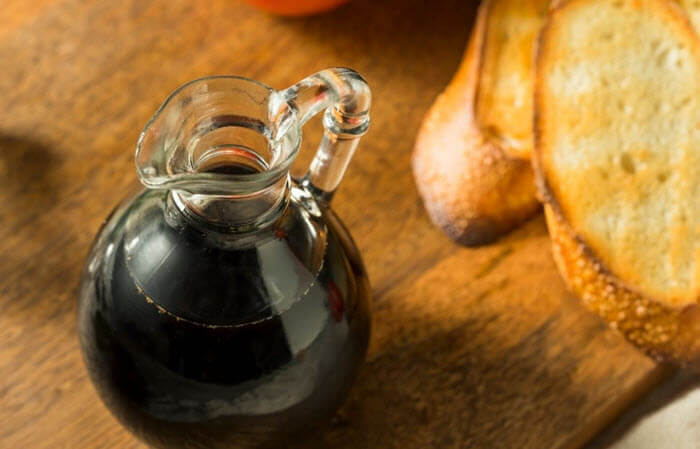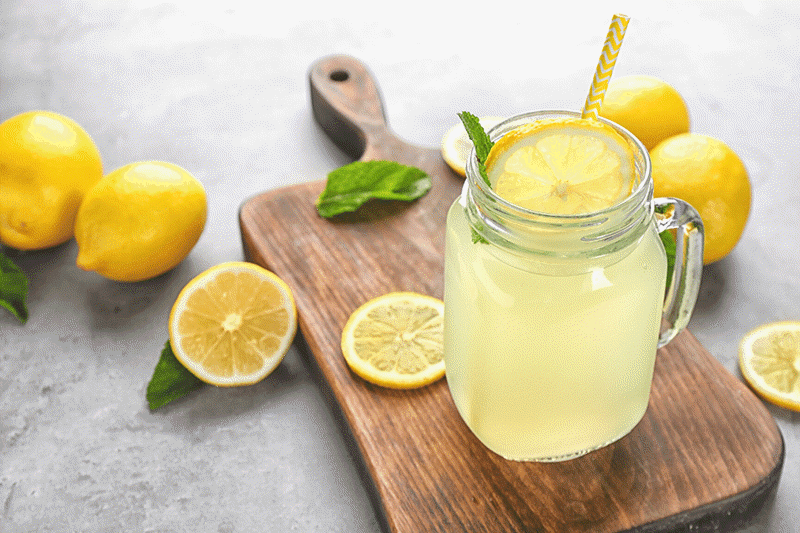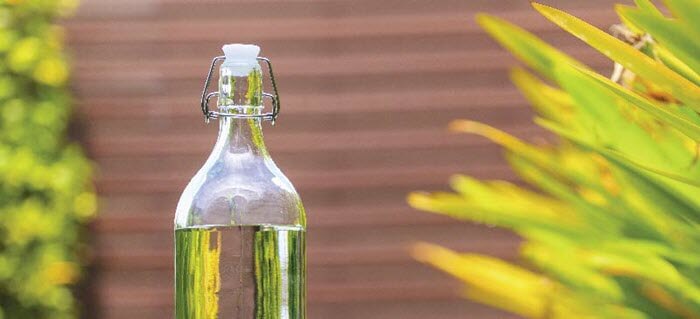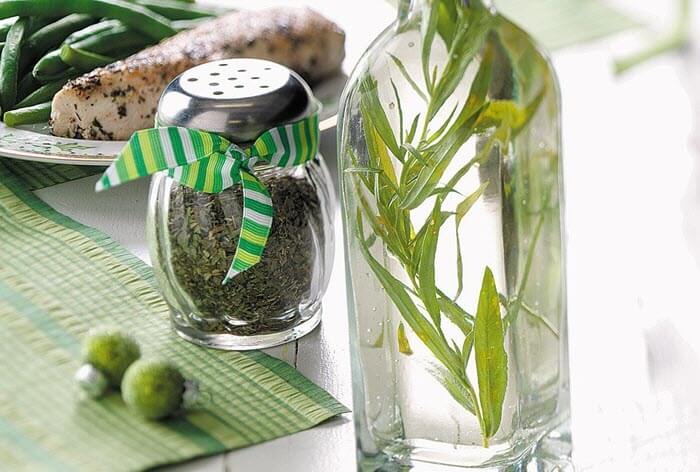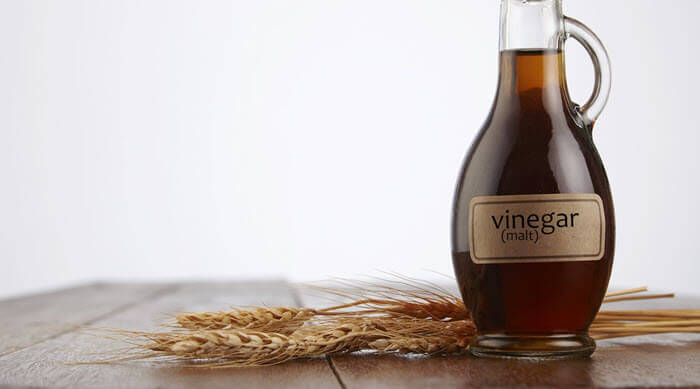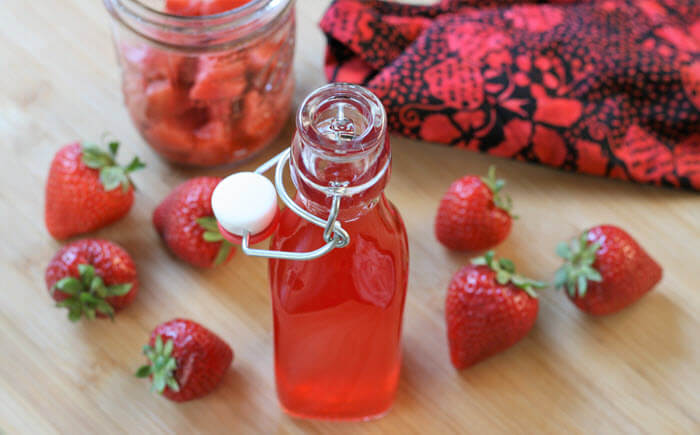Every skilled chef already knows the secret of champagne vinegar. This magical ingredient will improve the taste of dishes and give true passionate gourmets a reason for immense satisfaction and pleasure.
With its delicate flavor, it is an indispensable addition to many salty dishes and creamy salad dressings.
If you happen to run out of champagne vinegar, don’t despair because you can find fantastic substitutes available in many supermarkets, making your dishes irresistible.
Table Of Contents
- Things About Champagne Vinegar You May Like
- 15 Best Champagne Vinegar Substitutes
- 1. White Wine Vinegar
- 2. Apple Cider Vinegar
- 3. Raspberry Vinegar
- 4. Rice Wine Vinegar
- 5. Herb Vinegar
- 6. Red Wine Vinegar
- 7. Sherry Vinegar- Vinagre de Jerez
- 8. Balsamic Vinegar (Aceto balsamico)
- 9. Lemon Juice
- 10. Prosecco White Wine Vinegar
- 11. White Vinegar
- 12. Chinese Wine Vinegar
- 13. Tarragon Vinegar
- 14. Malt Vinegar
- 15. Strawberry Vinegar
- FAQs About Champaign Vinegar
Things About Champagne Vinegar You May Like
What is Champagne Vinegar?
Champagne vinegar is wine vinegar with a specific mild taste and flowery smell, obtained by the fermentation [1] from the most widespread Chardonnay variety of white grapes, which is most often grown in France in the wine regions of Burgundy, Chablis, and Champagne.
This variety of grapes is a base for Champagne vine [2] production, a sparkling wine that got its name after the same- named world-famous wine region – Champagne.
In addition to Chardonnay, champagne vinegar can also come from the red Pinot Noir grape variety, one of the oldest ones in France.
Some records say that this grape variety was cultivated by monks more than a hundred years ago, in the town of Pinos in Burgundy, from where it got its name.
What are the Features of Champagne Vinegar?
Like all types of wine vinegar, champagne vinegar will overwhelm you with its penetrating and aromatic smell when you first come into contact with it. However, in dishes, this typically sharp sour smell becomes milder.
As far as the taste is concerned, the delicate, light scent component of fruits and flowers with a slight hint of vanilla dominates.
This will only give a mild sour taste to the dish, which will not overpower its essence but will only improve it and give a specific fullness and exoticism.
Using champagne vinegar one can enhance the flavor already present in a dish and make it much better.
And no less important characteristic of vinegar is its color and texture. Given that this vinegar is made by fermentation of Chardonnay white wine, it is about a light-color vinegar of liquid texture.
How Can Champagne Vinegar be Used?
This vinegar is used as an addition to light dishes because of its light and mild flavor, which cannot interfere with other notes of taste.
Champagne vinegar is an excellent choice for healthy light salads, used as a tasty dressing for vegetables such as asparagus or for marinating chicken, fish, or scampi.
One does not use it in combination with red meats because of its mild taste, which does not match the strong meat scent.
It gives excellent effects in combination with simple ingredients such as olive oil, lemon, garlic, and spices, which are necessary for making delicious vinaigrette for salads.
It is an ideal choice as an addition to various sauces and homemade mayonnaise.
With its aroma and light taste, it goes perfectly with sweet dishes, improving the taste of various types of fruits in the form of delicious fruit salads and fruit salsas.
It is also irreplaceable in the preparation of some cocktails and drinks, giving them an enticing foaminess and slight acidity, and all of this together represents the real hit.
15 Best Champagne Vinegar Substitutes
If you do not have champagne vinegar on hand, the following products can serve as a substitute that will help you make excellent dishes.
1. White Wine Vinegar
White wine vinegar is obtained, as the name suggests, by fermentation, the boiling process of white wine. In culinary white wine vinegar is the most common substitute for champagne vinegar.
Both have a light and delicate flavor and are used interchangeably in recipes for various dishes, such as sauces, salad dressing, and marinades.
One can find it in almost every supermarket, so you can get it easily and use it as a substitute. There are different of its brands, so everyone can pick the one they suit the most.
Further reading: 8 Best White Wine Vinegar Review
2. Apple Cider Vinegar
Apple cider vinegar is sour, with a slightly sweeter, fruity note that is more pronounced than in the case of champagne vinegar. But when added to the dish, it is hardly noticeable.
Apple vinegar is a perfect addition to various dressings over fish, meat, or vegetables.
It is easy to get it, and during dish preparation, one should add a little less apple cider vinegar than champagne vinegar so that it does not overpower the dish.
Regardless of slight differences in taste, scent, and acidity, it is a good substitute for champagne vinegar.
Further reading: What’s the Difference Between Apple Cider and Apple Cider Vinegar?
3. Raspberry Vinegar
Summer is the ideal period to add raspberry vinegar to dishes, dominated by the sweet and mild taste of this fruit.
By adding this kind of vinegar to salads and meat, one will establish an ideal balance of extra sweet and sour taste.
Raspberry vinegar will significantly enhance any of your dishes, providing the perfect amount of fruitiness for an unforgettable gourmet delight.
4. Rice Wine Vinegar
Rice wine vinegar, made from Japanese rice wine, is an indispensable ingredient in dishes of Asian cuisine. As it has a similar taste to Champaign vinegar, one can use it as its successful substitute.
Rice wine vinegar is used as a delicious dressing for sushi, meat, and vegetables, turning the entire Asian kitchen into a world-famous rhapsody of flavors and aromas.
5. Herb Vinegar
There are different types of herb vinegar depending on the taste you want.
It can be vinegar with the taste of oregano, or basil, which will provide an exotic aroma and depth of taste to fish dishes and dressings.
Herb vinegar can be used as an alternative to champagne vinegar, but the taste will not be as sweet.
To achieve a sweeter effect, add a teaspoon of honey and sugar to it, and its taste will differ just a bit from champagne vinegar.
6. Red Wine Vinegar
Red wine vinegar, known for its delicious and characteristic spicy taste, is the basis of Mediterranean cuisine [3]. It has fine quality with wood tones thanks to the wood pieces added to the barrels where the wine is fermented. It is recognizable by its red color.
Red wine vinegar is a popular choice for preparing salad vinaigrettes and is the perfect ingredient for marinating meat, giving it a particularly rich and generous flavor.
Due to its properties, it is a suitable replacement for champagne vinegar and can also add a sweet note to dishes. It is not recommended to serve with fish.
7. Sherry Vinegar- Vinagre de Jerez
Sherry vinegar has a complex aroma and taste and attractive brown-red color. Given that it is obtained from the wine of the same name, originally from Spain, which may contain dried fruit, nutty notes, and some spices, one can find the same thing in vinegar.
About 60 such aromatic combinations exist in the world. It has a sweet, mild taste and, as such, is a perfect alternative to champagne vinegar.
It significantly improves the taste of fish and vegetable dishes. Due to its delicate flavor, one uses it to prepare dressings for light salads. A star of gastronomy all over the world, the quality of Sherry Vinegar is recognized for its culinary value.
Since 1994, Sherry vinegar has had its own designation of origin (DO), so it is only produced within the Sherry triangle (the municipalities of Jerez de la Frontera, Sanlúcar de Barrameda, and El Puerto de Santa Maria). Outside this triangle, its production is related to the Spanish province of Cadiz.
8. Balsamic Vinegar (Aceto balsamico)
Balsamic vinegar (Aceto balsamico) is a particular type of vinegar made from grapes, “Trebbiano di Spagna” from the city of Modena, located in the Emilia-Romagna region in northern Italy.
This type of grape has been cultivated in this region since 1650, from which a characteristic fragrant wine is gained. It is precisely this that is the basis for the production of Balsamic vinegar, which according to some records, has been produced since the Roman era more than 2000 years ago.
This vinegar features a specific slightly sour and sweet taste with a refined aroma. The secret of the delicacy of balsamic vinegar lies in the traditional production, passed down from generation to generation by family members. Apart from the long production process, quality is determined by raw materials, climatic conditions, and long-term storage in barrels made of specific types of wood.
Gourmets all over the world sigh for their drops, and the sweet and sour taste and the unique smell made it an extravagant food in the kitchen. Discover its charms in a classic combination with meat and salads or in an unusual one with strawberries and ice cream.
It is a perfect alternative to champagne vinegar, although one can not say it tastes the same. While preparing food, it is recommended to use the same amount as champaign vinegar.
It used to be considered a real prestige, so only wealthy Italian families used it. But in the middle of the 20th century, its commercial production began. Today it is an indispensable part of Italian cuisine.
The shelf life of balsamic vinegar is unlimited. Some families in Modena own vinegar that is 200 years old.
9. Lemon Juice
Lemon juice can replace all types of vinegar, including champagne vinegar.
Used for making delicious salad dressings, it is an indispensable ingredient in marinades poured over fish and, as such, an integral part of healthy, hearty Mediterranean cuisine.
Lemon juice prevents oxidative processes [4]. Few of its drops into cut vegetables or fruits will prevent them from losing color and freshness.
Lemon juice softens the meat, makes it tastier, and generally improves the taste of all dishes. It gives a sour taste to food and salad dressings featuring delightful flavors that awaken the appetite.
Since lemon juice is tart, acidity can be reduced by adding sugar.
Further reading: Does Lemon Juice Go Bad If Not Refrigerated?
10. Prosecco White Wine Vinegar
Prosecco is a light sparkling wine produced in the north of Italy. It has a sweet, pleasant taste with light fruity notes of apple, pear, peach, and apricot that are refreshing.
This quality wine is the basis for arising of the vinegar of the same name in the fermentation process, where Prosecco white wine vinegar itself retains Prosecco wine characteristics, the sweet taste obtained from a mixture of various types of fruit, and the delightful smell that carries the spirit of the Mediterranean.
Due to its characteristics, this vinegar is a suitable substitute for champagne vinegar because it is light and has a mild taste and sourness. It stems from the similarity between Prosecco and Champagne wine. They are both sparkling, bright, and slightly sweet.
Prosecco wine vinegar is an unbeatable ingredient in the preparation of various salads, making them so exotic, one of a kind, and above all, very nutritious and healthy. This crisp and refreshing vinegar is a must for classic Italian salad dressings.
It also gives fullness to sauces and soups, it is an obligatory addition to Mediterranean cuisine, which is based on healthy vegetables, fruit salads, and fruit salsas, enhancing their taste and making them more generous and noticeably better.
11. White Vinegar
White vinegar is an ingredient that every home has. It is a bright solution that contains 4-7 percent acetic acid. If you are in a hurry, you can use it in your dishes preparation as a substitute for champagne vinegar.
Although it has an intensely sour taste and a penetrating smell, it will be a very good choice for salads, as an ingredient in fish marinades, and will also improve the flavor of many meat dishes.
But, due to its higher acidity and striking smell and taste, it is necessary to use smaller quantities than champagne vinegar. Adding white wine is a good solution to soften its acidity. In that way, it will be sweeter, so it will be more like champagne vinegar. A deeper, fruitier taste of white vinegar one can achieve by adding red wine.
Further reading: White Vinegar vs Rice Vinegar: What’s the Difference?
12. Chinese Wine Vinegar
Chinese wine vinegar is one of the most significant spices in Chinese cuisine, created by the fermentation of rice, a food that has played a principal role in the life, culture, and gastronomy of the Chinese people for thousands of years. Rice has always been used in many inventive ways in preparing a wide variety of dishes, some of which are world famous.
In Chinese cooking, several types of rice vinegar are used, which contain many ingredients that enrich its basic taste, starting with ginger, orange peel, or cloves with the addition of sugar. This spice is indispensable in the preparation of many dishes, starting with sauces, salad dressings, and mixtures for pickling vegetables.
One can also use it as a side dish seasoning for salad, rice, and vegetables, making dishes more delicious and piquant. Some flavored types can enrich the drink taste, giving them a distinguish pleasant flavor ideal for the summer heat.
Due to its chemical characteristics related to sweetness and mild acidity, Chinese wine vinegar is an ideal replacement for champagne vinegar.
13. Tarragon Vinegar
Tarragon vinegar is obtained by soaking tarragon in white vinegar. It is a plant that resembles anise or licorice and leaves a pleasant taste in the mouth.
This vinegar, which has a bright and sharp flavor, is used as an addition to cooked vegetables such as cabbage, Brussels sprouts, and green beans, as well as in salad dressings and egg dishes. It also gives an exotic taste to fish and chicken meat.
Tarragon vinegar should be added to plates at the very end because it loses its properties after long cooking. German and French tarragon has a much more intense, sweeter, and spicier flavor than bitter Siberian or Russian tarragon.
The name tarragon comes from the Greek word for serpent or dragon – and another name for tarragon is “dragon plant”. Due to its sweet taste, Tarragon vinegar can be used as an alternative to champagne vinegar, which contains French and German tarragon.
Further reading: 12 Best Tarragon Vinegar Substitutes
14. Malt Vinegar
Malt vinegar is gained by fermentation of malted grains of barley, which turns into beer in the fermentation process, and further fermentation into vinegar. This vinegar can get from all types of beer, and the taste of beer is also felt in vinegar itself.
It has a sour taste, and its color can vary from light to dark brown. Some distilled varieties of this vinegar are clear and colorless.
Malt vinegar is the foundation of English and Canadian cuisine. It is used for pickling vegetables, baked fish, and chips are usually sprinkled with this vinegar when served. Malt vinegar mixed with olive oil is also used as a dressing for salads.
15. Strawberry Vinegar
Strawberry vinegar is an aromatic, fragrant vinegar of bright red color, created by pouring apple cider vinegar over ripe strawberries. Leave the contents in the jar to stand for about 3 weeks for the fermentation process to proceed smoothly. Fermentation over time only enhances the aroma of this fruit.
Strawberry vinegar has a mild, subtle sour taste, fragrant and sweet, and can significantly change the taste of your salads and make meals a real gourmet delight.
It goes well with other fruits, and with the addition of mint, it can serve as a refreshing summer drink. The combination of this vinegar’s sour and sweet taste and its enchanting fragrance makes it spectacular.
Anyone who likes strawberries can buy or make this vinegar at home. Some specialized stores also have it.
FAQs About Champaign Vinegar
What is the closest vinegar to champagne vinegar?
The most similar to champagne vinegar is white wine vinegar. Although it is slightly less sweet and has a slightly more sour note when you compare it with champagne vinegar.
The difference is almost not noticeable, especially in dishes where there are other ingredients that minimize the difference between the two kinds of vinegar and make it almost imperceptible.
This is also referring to salad dressings and a simple vinaigrette preparation.
Is white balsamic vinegar the same as champagne vinegar?
White balsamic vinegar is not the same as champagne vinegar. White balsamic vinegar differs from champagne vinegar in that it is milder, less acidic, and sweeter.
Can you substitute champagne vinegar for white vinegar?
Yes, white vinegar is a good alternative if you don’t have champagne vinegar on hand.
But, due to its higher acidity and striking smell and taste, it is necessary to use smaller quantities than champagne vinegar.
Adding white wine is a good solution to soften its acidity. In that way, it will be sweeter, so it will be more like champagne vinegar.
A deeper, fruitier taste of white vinegar one can achieve by adding red wine.
Can I substitute champagne vinegar for sherry vinegar?
Champagne vinegar has a slightly sweeter and milder taste than other types of wine vinegar, and its characteristics make it a pretty good substitute for sherry vinegar.
Where to buy champaign vinegar
One can purchase Champagne vinegar in specialized health food stores, and numerous online stores offering this type of product.
Conclusion
It is widely known how famous French cuisine is in the world, for its diverse range of dishes, captivating with different flavors and scents.
Champagne vinegar, otherwise known as golden drops, which contains the entire tradition and culture of this nation, contributes to that.
Therefore, it is not unusual that this vinegar is so sought after in the world. A few of its drops will make your food fuller and your bites spicier and juicier.

